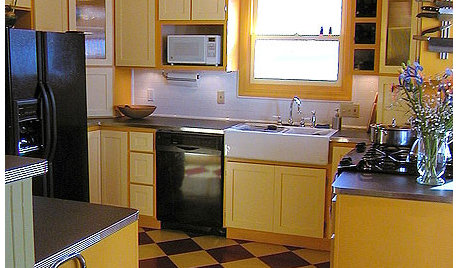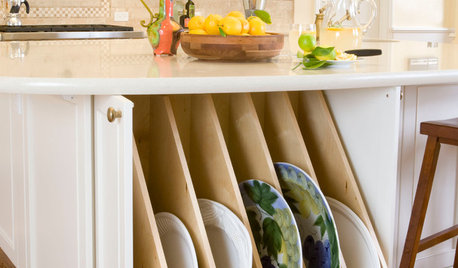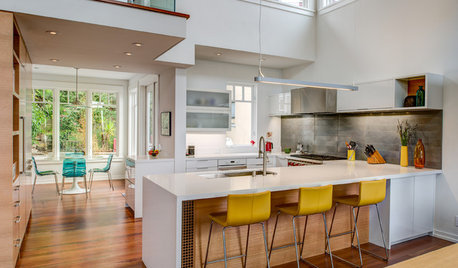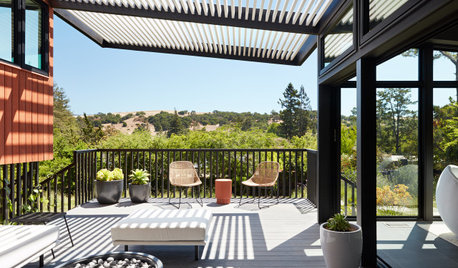Sanity check on central A/C costs in Bay Area, CA
Dave Johnson
2 years ago
Featured Answer
Comments (38)
Austin Air Companie
2 years agomike_home
2 years agolast modified: 2 years agoRelated Discussions
Allergies and Central Vac/ Hide-a-hose in CA bay area
Comments (19)HEPA is not a brand; it is a designation defining a standard of particulate removal efficiency. "By government standards, a HEPA air filter must remove 99.97% of all particles greater than 0.3 microns from the air that passes through." It is a proven standard that is reproducible and is not dependent upon the design of a central vac system that would be inherently variable depending on home design and quality of installation and implementation (actual suction of a central vac is dependent upon run length, tubing diameter and turbulence from non-straight runs) HEPA vacuum filtration has been proven in controlled trials (funded by the NIH) to mitigate allergen exposure specifically in asthmatic subjects. In fact, regarding vacuuming with a HEPA filtered vacuum: "The intervention was effective in improving measures of lung function, reducing the frequency of coughing, reducing the proportion of children requiring unscheduled medical visits and reporting inadequate use of controller medication." In order to claim that a central vacuum would be superior one would have to show that the act of vacuuming with a central vac would aerosolize fewer respirable particles than a portable vacuum and more effectively remove allergen from the environment. I can find no evidence of this and it is counterintuitive that it would, given that the suction of a vacuum is not the primary determinant of aersolization of particles; the act of vacuuming stirs up particles from the leading and trailing edges of the head while suction is directed perpendicular to the direction of movement and aerosolization. So, if they both aerosolize particles equally which one is better? I'll take the one that uses a standardized method of particle removal over one that is installation-dependent. I'll take an evidence-based, proven intervention over a "seems like that should work" intervention any day. Interestingly, HEPA-rated portable vacuums are also the standard for asbestos abatement and nuclear remediation. And I'll state most importantly that the person with the allergies should not be the one doing the vacuuming. Particles can remain suspended for 60-90 minutes after they are aerosolized so the allergic individual would ideally not be in the room for that length of time as well. Obviously the allergic person should not be emtying the bags or canisters whether in a central of portable vac. I always recommend that portable vacuums should be emptied outside as well....See MoreGC cost-plus sanity check
Comments (46)I hate to disagree with you two, but... If you want a higher margin stick it in the percentage, don't hide it a complex bid. To me the builder, named at the beginning of the thread, seemed to develop ways to hide his actual percentage, so that he can say 14%. I find, in my experience, that quality and integrity don't usually drift too far apart. If you want 20%, then walk up to someone and say unapologetically, "I charge 20%, while my competition charges 14%, for my 20% these are the services you get. I lose some customers to those guys charging 14%, but the customers who go with me don't usually regret that extra 6%." Complex fee structures are just a way to keep clients off their guard or hide what the actual charges are going to be. I am of the opinion that every builder should be able to quote their fees in one sentence and justify them in two more. People used car analogies in this thread and so let me use one. Would you buy a car from a dealer that quoted a payment $700 for the car, a 6.5% loan service fee, and vehicle ownership transfer fees of $5,000 spread evenly over the life of the loan?...See MoreSanity check on heat pump installation quote?
Comments (12)Thanks for the feedback, all. Two reputable contractors came up with roughly the same load calculations, resulting in 7 - 8 tons. The 2600sf is deceptive... The layout of the house is reminiscent of raquetball courts. Lots of vertical everywhere, if measured in cubic footage you might get a more reasonable perspective on this strange house. I might just do an energy audit as klaire2001 suggested and see if that tonnage can't be downsized. But for now let's assume 8 tons is the right figure. So how much should I expect to pay for top-grade high-SEER matched heat pump systems like Carrier Infinity 16? (Assume no additional furnace is added.) Keep in mind that there is no existing ductwork, and the house does not make ductwork particularly easy to install. My current plan was to run exposed spiral ductwork along one of the cathedral peaks to reach the upstairs rooms... Knowing we could box off the peak if it looks too crazy. Without seeing a floorplan that probably doesn't make sense to you, but you'll have to trust me on it. :)...See MoreCustom cabinet makers in bay area California
Comments (20)I'm not sure how much more expensive the "doohickeys" make the cost, b/c we have a doohickey-less kitchen. So I don't think I can be too helpful with information. Back when I was calling around, I found a number in the Good Service Guide for a high end cabinet maker described as "formerly available only to the trade." So out of curiosity I gave him a call. I simply said that I was beginning to price cabinets, and that I would be using a simple shaker style, and could he please give me just a very rough idea of whether or not I could afford his work. He estimated about 1000 per linear foot. I'm guessing that means just the boxes, sans doohickeys. For around 300 per linear foot, I spoke with "friends of friends..." These were typically "retired" gentlemen who had a passion for carpentry. Again, my cabinet needs are very, very simple. So that might make a difference. Then again, as long as one has the tools and experience, I guess it isn't a big leap from shaker style, to cathedral arches and corbels. My current guy is doing about 8 feet of cabinetry: 1 door unit, 1 door + drawer, one sink cabinet for Shaw's fireclay, one trash cab, and a dishwasher panel made to look like a drawer + door. He did the demo for me. The cabs will probably be unfinished, paint grade birch with plywood boxes. (Though sometimes he sounds like he might try to prime them if he has time.) His price is 3400.00 for this. So that's a little over 400 linear foot for the bare bones cabinets. I'll keep you posted on the work... Six figures just doesn't seem reasonable to me. But then, God is in the details, right? In that respect, I have a godless kitchen! :-) Francy...See MoreCharles Ross Homes
2 years agoElmer J Fudd
2 years agolast modified: 2 years agoDave Johnson
2 years agosktn77a
2 years agoDave Johnson
2 years agoElmer J Fudd
2 years agoCharles Ross Homes
2 years agomike_home
2 years agoAustin Air Companie
2 years agolast modified: 2 years agoCharles Ross Homes
2 years agowdccruise
2 years agolast modified: 2 years agoDave Johnson
2 years agoAustin Air Companie
2 years agoElmer J Fudd
2 years agoCharles Ross Homes
2 years agoElmer J Fudd
2 years agoCharles Ross Homes
2 years agoElmer J Fudd
2 years agojrb451
2 years agoElmer J Fudd
2 years agolast modified: 2 years agoCharles Ross Homes
2 years agoCharles Ross Homes
2 years agoAustin Air Companie
2 years agoCharles Ross Homes
2 years agoAustin Air Companie
2 years agoCharles Ross Homes
2 years agomike_home
2 years agolast modified: 2 years agoCharles Ross Homes
2 years agoElmer J Fudd
2 years agolast modified: 2 years agoElmer J Fudd
2 years agolast modified: 2 years agoAustin Air Companie
2 years agolast modified: 2 years agoCharles Ross Homes
2 years agoElmer J Fudd
2 years agoCharles Ross Homes
2 years agoElmer J Fudd
2 years ago
Related Stories

INSIDE HOUZZHow Much Does a Remodel Cost, and How Long Does It Take?
The 2016 Houzz & Home survey asked 120,000 Houzzers about their renovation projects. Here’s what they said
Full Story
KITCHEN DESIGNKitchen Remodel Costs: 3 Budgets, 3 Kitchens
What you can expect from a kitchen remodel with a budget from $20,000 to $100,000
Full Story
KITCHEN STORAGE13 Popular Kitchen Storage Ideas and What They Cost
Corner drawers, appliance garages, platter storage and in-counter knife slots are a few details you may not want to leave out
Full Story
INSIDE HOUZZHouzz Survey: See the Latest Benchmarks on Remodeling Costs and More
The annual Houzz & Home survey reveals what you can expect to pay for a renovation project and how long it may take
Full Story
HOUSEKEEPINGGot a Disastrously Messy Area? Try Triage
Get your priorities straight when it comes to housekeeping by applying an emergency response system
Full Story
SELLING YOUR HOUSE10 Low-Cost Tweaks to Help Your Home Sell
Put these inexpensive but invaluable fixes on your to-do list before you put your home on the market
Full Story
WORKING WITH PROSHow Much It Costs to Work With an Architect
Learn what architects do and how they charge for their work
Full Story
WORKING WITH PROSHow Much Does It Cost to Hire an Interior Designer?
Interior designers may charge hourly rates, flat fees, cost-plus or a combination. Here’s what that means for you
Full Story
ARTLet's Put a Price on Art: Your Guide to Art Costs and Buying
We paint you a picture of what affects an artwork's price — plus a little-known way to take home what you love when it's beyond your budget
Full Story
PATIOS9 Stylish Shade Solutions for Patios and Small Garden Areas
Cool down modest-size outdoor spaces with features such as awnings, umbrellas, small shade trees and more
Full Story



Charles Ross Homes